© ROOT-NATION.com - Use of content is permitted with a backlink.
Since Apple added “spatial audio” to its Music streaming service and AirPods family of wireless headphones in 2021, it seems like you can’t read about new audio products or services without encountering this term. Over the past few years, it seems to have become ubiquitous.

This has led to many misconceptions about what spatial audio is, how it works, and why you need to hear it for yourself. People often ask, “If Apple created spatial audio, why do other companies claim they have it too?” The answer is that Apple didn’t create it, and you certainly don’t need to own their products to experience spatial audio.

So, what is spatial audio and how is it different from (or possibly similar to) other terms you’ve probably heard, such as surround sound and Dolby Atmos? Today, I’ll try to explain it in simple and understandable terms.
Read also: How to Block Spam, Unwanted Calls, and Messages on iOS and Android
What is spatial audio?
Spatial audio is a general term for various effects you can experience through headphones or speakers. In headphones, it’s a system that adjusts the balance and frequency characteristics of different sounds between your ears to create a sense of directionality. In some cases, it includes motion sensors and head-tracking to enhance the effect.
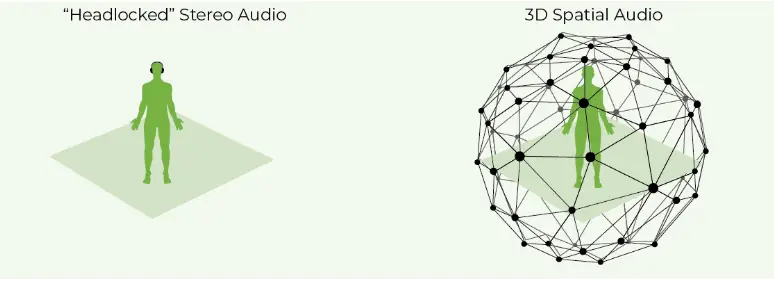
Just as the transition from mono to stereo sound required a new format—with two audio channels instead of one—spatial audio has given rise to new formats. You’ve probably heard of the most popular spatial audio format, Dolby Atmos, but there are others, such as DTS:X and Sony 360 Reality Audio. New formats bring new technologies. To hear these spatial audio formats, you need access to music or video content created with spatial audio, and possibly new equipment designed to play this kind of sound.
Read also: What is a Security Patch and Why Is It So Important?
Sources of spatial audio content
Movies were the first type of content to use spatial sound and remain the most popular. Films and TV shows with Dolby Atmos support are now widely available on streaming services like Netflix, Amazon Prime Video, Disney+, Apple TV+ and many others. DTS hasn’t become as widespread on streaming platforms yet, but Blu-ray discs often use this spatial audio format.
Music is the latest type of content to adopt spatial audio. Apple, more than any other company, has become the main advocate for spatial sound in music, which is why you’re likely hearing about it more and more now.
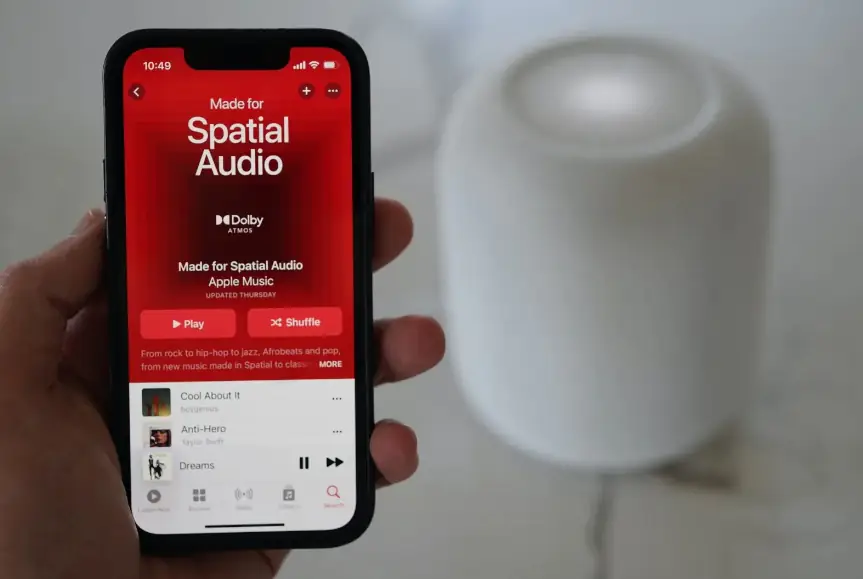
To access music in spatial audio format, you’ll need a subscription to one of these music services:
- Apple Music offers spatial audio in the Dolby Atmos Music format.
- Amazon Music and Tidal support both Dolby Atmos Music and Sony 360 Reality Audio.
You can also get Dolby Atmos Music on Blu-ray discs. Due to lossless compression, this is the highest quality version of spatial audio for music. Unfortunately, transferring this content to phones or other portable devices is difficult and often impossible, so spatial audio on Blu-ray discs will remain for home listening in the foreseeable future.
Read also: Top TV Series Worth Waiting for in the Second Half of 2024
How to listen to spatial audio
You can listen to spatial audio for both movies and music using speakers or headphones, but there are significant differences in the equipment you’ll need.
Speakers
Speaker-based spatial audio requires one of the aforementioned content sources—a device capable of decoding the spatial audio format, an amplifier to power the speakers, and the speakers themselves.

The good news is that in some cases, you can get all of this in one device. It all depends on how critical you are about sound quality (and how much money you’re willing to spend).

Spatial audio for movies poses the biggest technical hurdle. For streaming, aside from subscribing to the relevant video streaming service, you’ll need a device with Dolby Atmos compatibility that works with the service’s app, and importantly, Dolby Atmos content from your chosen service.
Some of the latest smart TVs meet all these requirements—if you’re in this camp, congratulations—one less device you’ll need to purchase. For others, a streaming device like the Apple TV 4K is a necessity. Again, support for Atmos on the device and in the app you choose is key to making everything work. For disc playback, you’ll need a Blu-ray player compatible with Dolby Atmos or DTS:X (preferably both).
The next step in the chain is your audio system. TVs with Dolby Atmos support theoretically allow you to hear spatial audio, but the experience from them is usually not very pleasant. Most people will want something better.
A soundbar with Dolby Atmos support is one of the simplest ways to get spatial audio from a home theater. You can opt for a full-fledged home theater system with wired speakers powered by an AV receiver with Dolby Atmos support, or a simpler option—a soundbar with Dolby Atmos support.
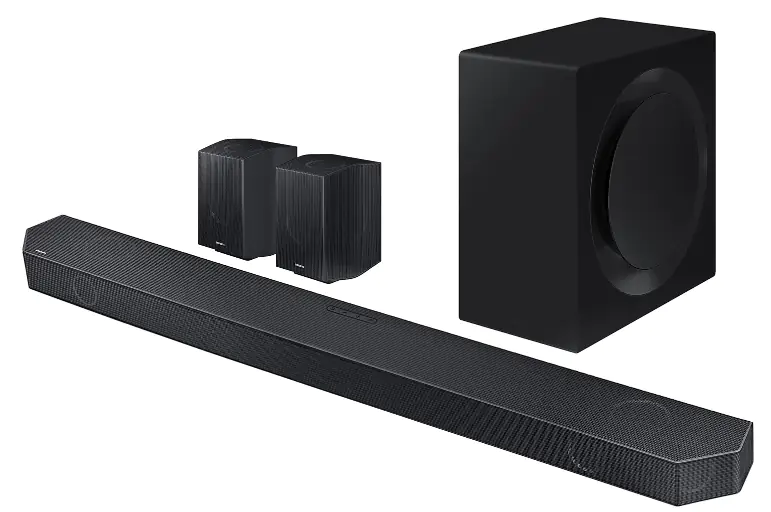
Whichever method you choose, you’ll be able to hear spatial audio in movies and TV shows. You can also listen to music with spatial audio with the same caveats: your chosen equipment must support the streaming service or discs.
If you simply want to listen to spatial audio music, there are increasingly more wireless speakers with Dolby Atmos support. These include the Apple HomePod, Sonos Arc, JBL Authentics 500, and Amazon Echo Studio. Before purchasing, make sure the speaker you choose works with your favorite streaming service—some models have limited service support.
Read also: TV series to help overcome stress and get distracted. Vol. 2
Headphones
Accessing spatial audio through headphones is a straightforward process backed by very smart science. If you have an iPhone or an Android smartphone and one of three streaming audio apps (Apple Music, Tidal, or Amazon Music), you’ll be able to hear spatial audio using any pair of stereo headphones or earphones that work with your device. They can be wired or wireless.
- Apple Music
- Tidal
- Amazon Music
The secret to hearing the equivalent of a full 7.1.4 home theater system through regular headphones is a technology known as binaural rendering.
If we were to close our eyes and someone stood 3 meters away from us and clapped their hands, it would only take us a fraction of a second to accurately determine the direction of the sound. We could likely also with high accuracy say how far away the sound is. That’s because our brains are sensitive to things like volume, pitch, and even the slightest changes in timing of sounds reaching our ears. These auditory signals can be simulated thanks to the science of “psychoacoustics.”
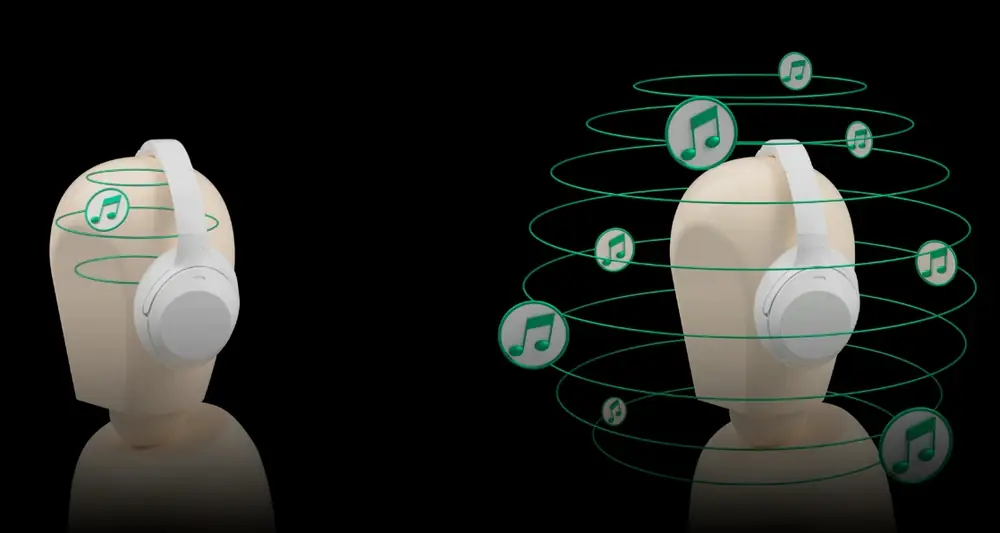
Without anything more complex than a set of regular stereo headphones, you can generate sound for each ear that reproduces how our brains perceive sounds in the real world. Using the principles of psychoacoustics, binaural rendering takes a spatial audio format like Dolby Atmos and mimics how it would sound as if you were in a studio or home theater equipped with surround sound speakers, including overhead height channel speakers. Apple Music, Tidal and Amazon Music apps contain binaural rendering, so there’s no need for additional hardware or software.
Our heads and ears play a significant role in sound perception. Even the specific shape of our ears can have an impact, which is why Apple and Sony ask users to upload photos of their ears in their apps. With this additional data, binaural rendering can make spatial audio more realistic.
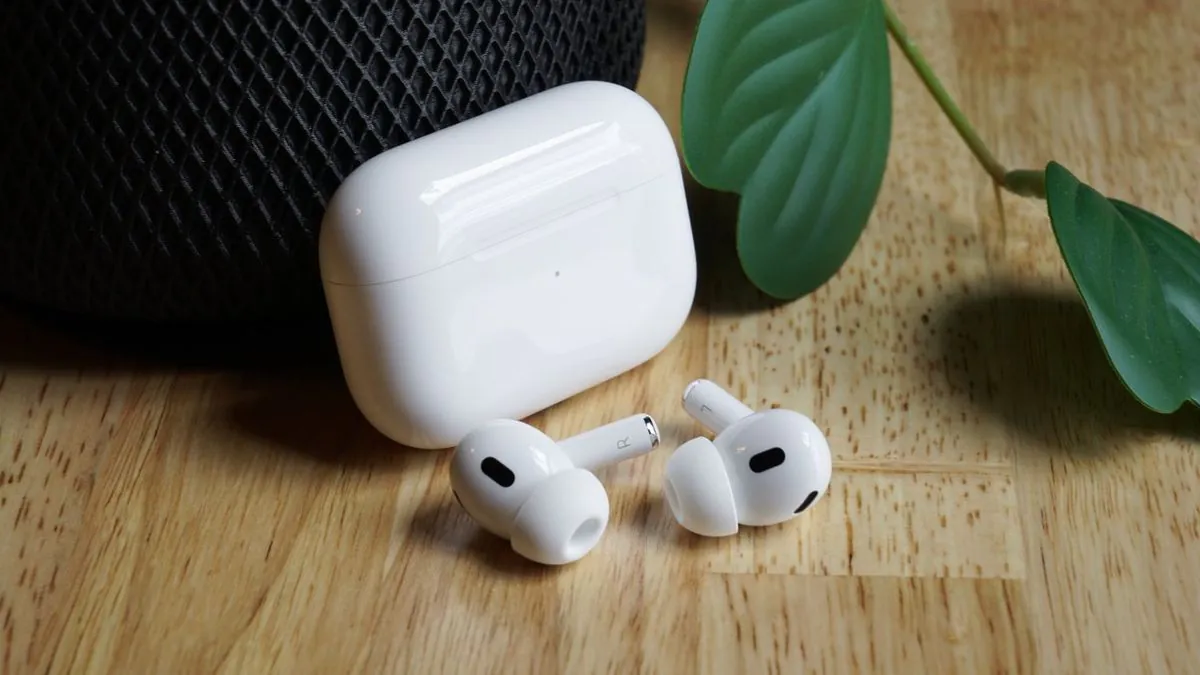
Apple calls this feature “Personalized Spatial Audio,” and it’s currently supported exclusively on AirPods Pro, AirPods Max, AirPods (3rd generation), Beats Fit Pro, or Beats Studio Pro. Plus, your iPhone’s front-facing camera must support TrueDepth for accurate scanning of your ears (iPhone X or newer, excluding SE models).
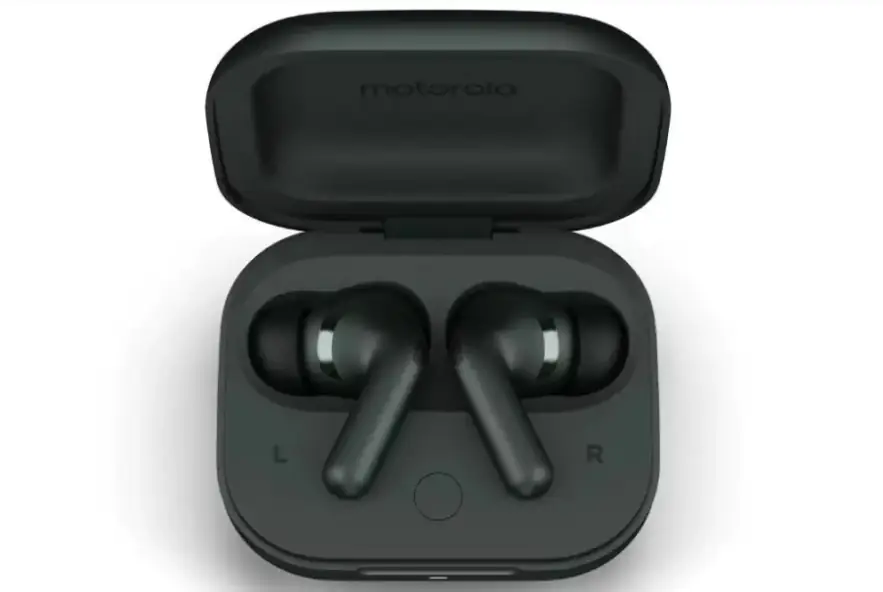
As for other headphones that support spatial audio—Motorola recently released the Moto Buds+, which are TWS earbuds developed in collaboration with Bose. They not only effectively reduce unwanted background noise but also boast compatibility with Dolby Atmos panoramic sound effects and Dolby Head Tracking on Motorola phones, providing an immersive listening experience.
Read also: Motorola Moto Buds+ TWS Review: High-Quality Hi-Res Audio and “Sound by Bose”
Dolby Atmos
Some audio products are capable of “upmixing” stereo or other non-spatial audio formats into something that sounds very similar to true spatial audio formats like Dolby Atmos. This feature is less common on smart TVs, but almost all AV receivers and soundbars with Dolby Atmos support can utilize Dolby upmixing, blending any audio source to almost spatial sound quality using all available speakers in your system.
Some soundbars that don’t support Dolby Atmos have a version of this technology known as DTS Virtual:X, which can do something similar, while some brands combine Dolby technology with their own upmixing technology, such as Sony Immersive AE and Sennheiser Ambeo.

You’ll also find this capability in some headphones and wireless earbuds. Apple’s AirPods Pro, AirPods Max, and third-generation AirPods have this feature, as do Bose’s QuietComfort Ultra headphones, QuietComfort Ultra Earbuds, and Ultra Open Earbuds.
Read also: 10 Mistakes That Simplify the Work of Hackers
Head position tracking function
The head tracking feature introduced by Apple embeds a series of motion sensors into wireless headphones or earbuds to provide you with an enhanced sense of spatial audio realism. We’ve noted that headphone-based spatial audio can mimic sitting in a room with a 7.1.4-channel home theater. Without tracking, when you move your head, the entire home theater system moves with you—wherever you look, that’s where the “front” of the room is.

Thanks to head motion tracking, the room (and its “speakers”) remain stationary. By turning your head, you feel as if you’re truly in the room. Sounds coming from in front of you (like actors’ dialogue or a vocalist’s singing) stay fixed in space. Turn to the left, and the sound will shift to the right of you. Turn to the right, and the sound will move to the left.
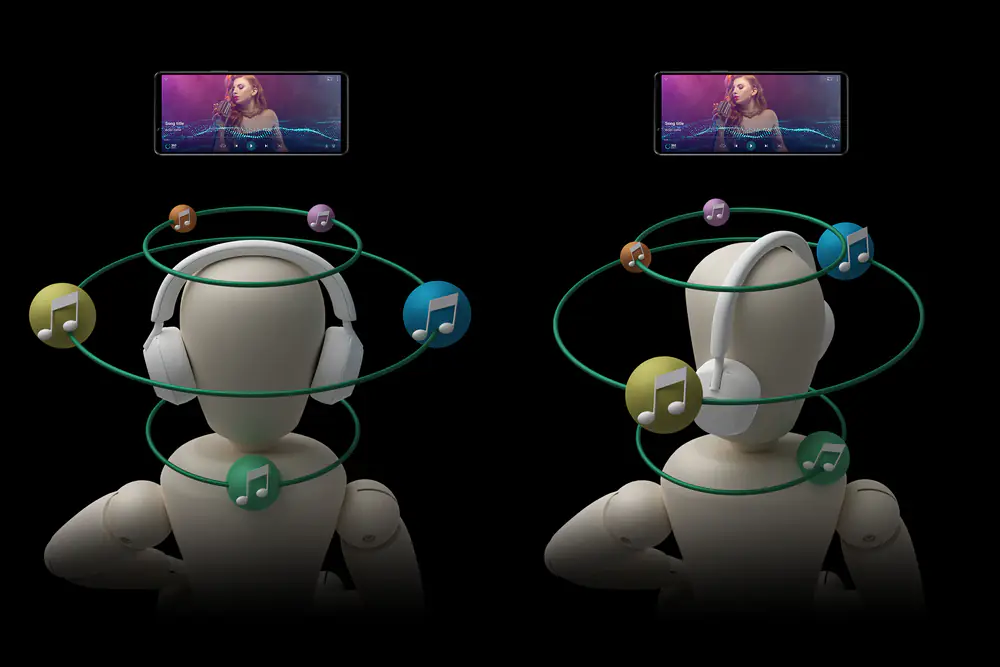
While it’s unclear whether spatial audio with head motion tracking enhances the music listening experience—actually, if you’re not sitting still, it can be very distracting or even disorienting. But the movie-watching experience can be unforgettable. Head motion tracking works best with binaural spatial audio formats like Dolby Atmos, but it can also be used for mixed audio content.
Read also: Everything You Need to Know About the Fallout Series (Spoiler-Free)
How to listen to Dolby Atmos music in Apple Music
iPhone / iPad
Make sure you’ve enabled Dolby Atmos in your settings by following these steps:
1. Select the Dolby Atmos listening mode on your iPhone or iPad.
2. Update your iPhone or iPad to the latest version of iOS or iPadOS.
3. Go to “Settings.”
4. Tap on “Music.”
5. Under the “Audio” section, select “Dolby Atmos.”
6. Choose “Automatic,” “Always On,” or “Off.”
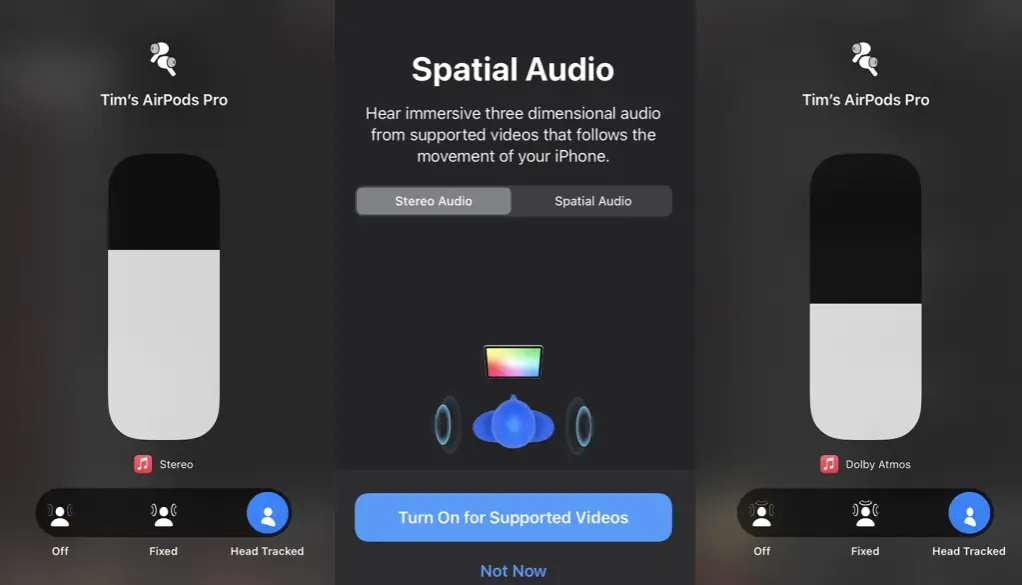
Tips for buying spatial audio
Spatial audio has become such a popular term that companies have started labeling their products with it, especially in the world of headphones. This is where good old-fashioned buyer beware rules will help you avoid disappointment.
The first thing to remember is that all stereo headphones work with spatial music. Your headphones don’t necessarily need to have “spatial sound,” “Dolby Audio,” or “Dolby Atmos” written on them. If you have access to spatial audio content through a streaming app on your phone, you don’t need anything else.
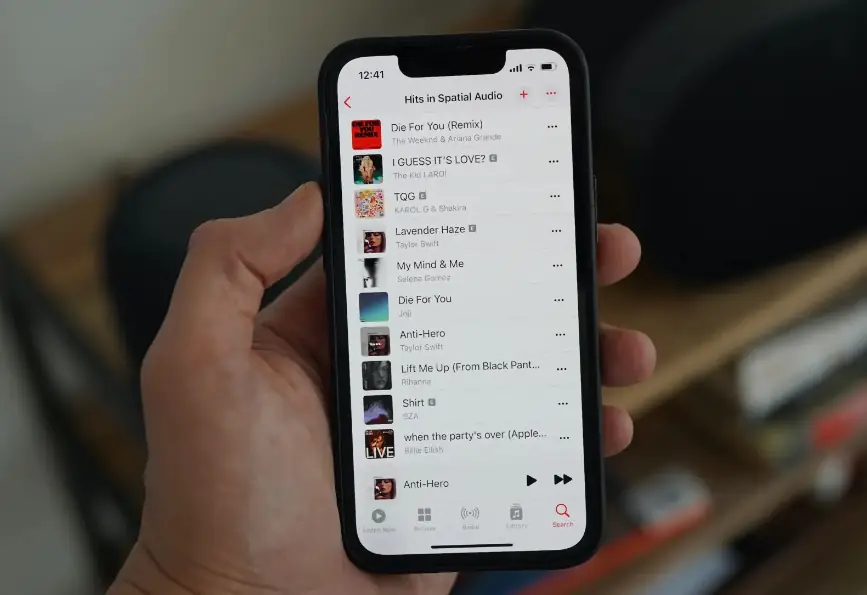
Similarly, just because a product supports spatial audio doesn’t mean it will perform advanced functions like spatial audio mixing or head tracking. If these features are important to you, read the full specifications and make sure that’s exactly what you’re getting. For example, Beats claims that its wireless headphones Beats Studio Buds+ and Beats Fit Pro support spatial audio. But if you read the full description, you’ll see they promise a completely different experience. The Beats Studio+ headphones “support spatial sound for immersing yourself in music, providing voluminous sound that you can take with you anywhere. It’s like being surrounded by 64 speakers at once.” The Beats Fit Pro “support spatial audio with dynamic head tracking for immersive music, movies, and games. Dynamic head tracking uses gyroscopes and accelerometers to adjust the sound when you turn your head for a multidimensional experience that makes you feel like you’re inside it.”
Secondly, as intriguing as spatial audio may be, it’s not for everyone. Especially with headphones, I recommend trying features like head motion tracking before spending more money on a product.
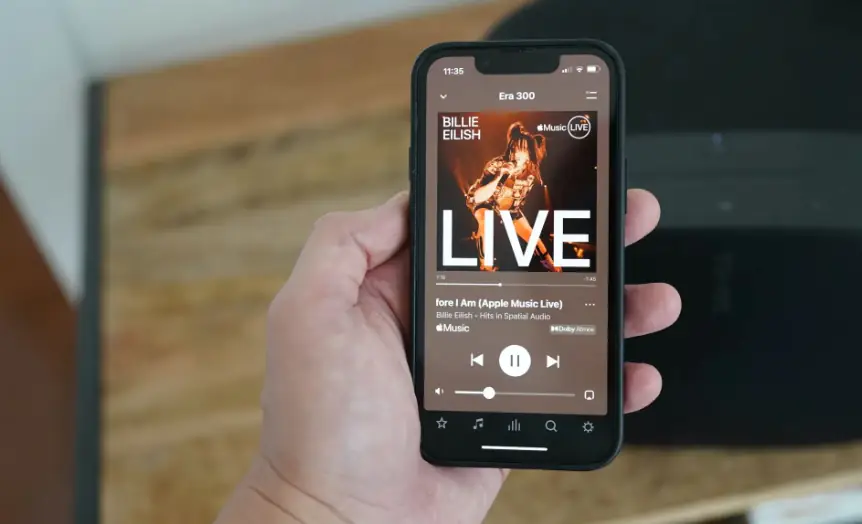
When it comes to purchasing soundbars, keep in mind that there can be a huge difference in spatial sound between them. A 2.1-channel soundbar for $200 may be Dolby Atmos compatible, but it won’t come close to providing the immersion you’ll get from a 7.1-channel soundbar for $1000.
Read also:
- What is HDR in monitors and how to properly adjust it
- Everything About the Series ‘The Three-Body Problem’ (Spoiler-Free)

